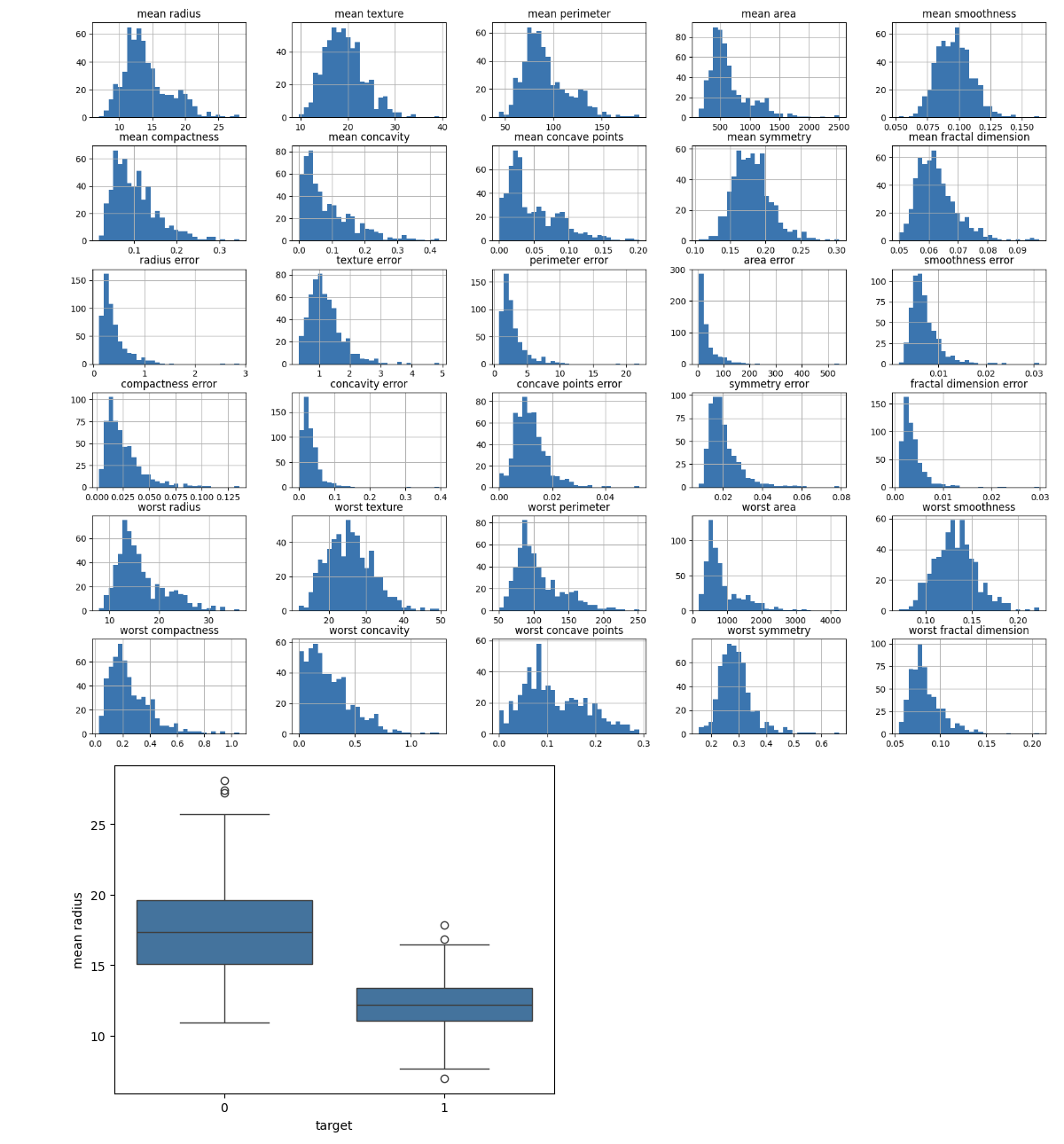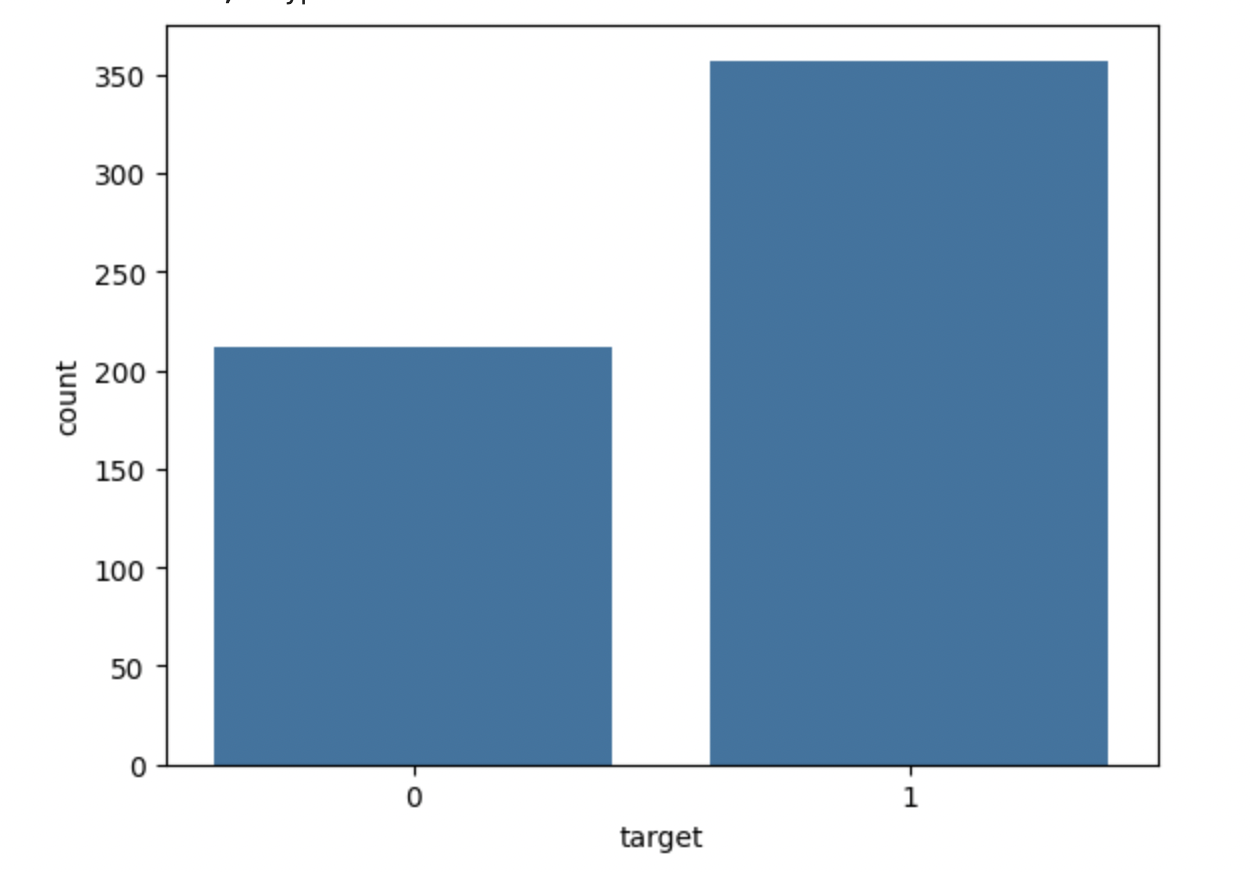LightGBM - 在 Python 中实现
在本章中,我们将了解在 Python 中开发 LightGBM 模型的步骤。我们将使用 Scikit-learn 的 load_breast_cancer 数据集构建二元分类模型。步骤如下:加载数据、为 LightGBM 准备数据、建立参数、训练模型、进行预测并评估结果。
LightGBM 的实现
因此,让我们使用 Python − 创建一个基本模型
1. 加载数据集
首先,我们使用 Scikit-learn 的 load_breast_cancer 方法加载数据集。该数据集包含乳腺癌分类的特征和标签。
from sklearn.datasets import load_breast_cancer # 加载数据集 data = load_breast_cancer() X = data.data y = data.target
2. 分割数据
使用 Scikit-learn 的 train_test_split 方法将数据集分割为训练集和测试集。这样我们就可以在一组数据上训练模型,然后在另一组数据上评估其性能。
from sklearn.model_selection import train_test_split # 分割数据 X_train, X_test, y_train, y_test = train_test_split(X, y, test_size=0.2, random_state=42)
3. 为 LightGBM 准备数据
将训练和测试数据转换为 LightGBM 数据集格式。此步骤优化了LightGBM训练算法的数据格式。
import lightgbm as lgb # 将数据转换为LightGBM数据集格式 train_data = lgb.Dataset(X_train, label=y_train) test_data = lgb.Dataset(X_test, label=y_test, reference=train_data)
4. 定义参数
设置LightGBM模型的参数。这些参数包括目标函数、评估指标、学习率、叶子计数和最大树深度。
params = {
'objective': 'binary',
'metric': 'binary_logloss',
'boosting_type': 'gbdt',
'learning_rate': 0.1,
# 从 31 增加
'num_leaves': 63,
# 设置为正值以限制深度
'max_depth': 10
}
5. 训练模型
使用训练数据训练 LightGBM 模型。为了防止过度拟合,我们使用提前停止,这意味着当验证集上没有看到任何进展时训练结束。
# 使用提前停止训练模型
lgb_model = lgb.train(
params,
train_data,
num_boost_round=100,
valid_sets=[test_data],
# 使用回调进行提前停止
callbacks=[lgb.early_stopping(stopping_rounds=10)]
)
输出
以下是上述步骤的结果 −
[LightGBM] [Info] Number of positive: 286, number of negative: 169 [LightGBM] [Info] Auto-choosing col-wise multi-threading, the overhead of testing was 0.000734 seconds. You can set `force_col_wise=true` to remove the overhead. [LightGBM] [Info] Total Bins 4548 [LightGBM] [Info] Number of data points in the train set: 455, number of used features: 30 [LightGBM] [Info] [binary:BoostFromScore]: pavg=0.628571 -> initscore=0.526093 [LightGBM] [Info] Start training from score 0.526093 [LightGBM] [Warning] No further splits with positive gain, best gain: -inf [LightGBM] [Warning] No further splits with positive gain, best gain: -inf
6. 进行预测
使用训练模型预测测试数据。我们将概率返回为二进制结果。
# 在测试集上进行预测 y_pred = lgb_model.predict(X_test) y_pred_binary = [1 if x > 0.5 else 0 for x in y_pred]
7. 评估模型
计算测试集的准确度分数以评估模型的性能。这使我们能够了解模型在使用之前未见过的数据时的表现。
from sklearn.metrics import accuracy_score
# 评估模型
accuracy = accuracy_score(y_test, y_pred_binary)
print(f"Accuracy: {accuracy:.2f}")
输出
这是上述模型的准确率 −
准确率:0.96
LightGBM 模型的探索性数据分析 (EDA)
在训练和测试 LightGBM 模型之前必须进行探索性数据分析 (EDA),以便了解数据集、识别模式并为建模做好准备。 EDA 涉及检查数据集的结构、分布、相关性和潜在问题。
以下是使用 EDA 处理 load_breast_cancer 数据集的步骤 −
1. 加载和检查数据集
首先,我们必须加载数据集并检查其基本结构,如样本数量、特征和目标变量。
import pandas as pd from sklearn.datasets import load_breast_cancer # 加载数据集 data = load_breast_cancer() df = pd.DataFrame(data.data, columns=data.feature_names) df['target'] = data.target # 检查数据集 print(df.head()) print(df.info()) print(df.describe())
输出
这将导致以下结果:
mean radius mean texture mean perimeter mean area mean smoothness \ 0 17.99 10.38 122.80 1001.0 0.11840 1 20.57 17.77 132.90 1326.0 0.08474 2 19.69 21.25 130.00 1203.0 0.10960 3 11.42 20.38 77.58 386.1 0.14250 4 20.29 14.34 135.10 1297.0 0.10030 mean compactness mean concavity mean concave points mean symmetry \ 0 0.27760 0.3001 0.14710 0.2419 1 0.07864 0.0869 0.07017 0.1812 2 0.15990 0.1974 0.12790 0.2069 3 0.28390 0.2414 0.10520 0.2597 4 0.13280 0.1980 0.10430 0.1809 mean fractal dimension ... worst texture worst perimeter worst area \ 0 0.07871 ... 17.33 184.60 2019.0 1 0.05667 ... 23.41 158.80 1956.0 2 0.05999 ... 25.53 152.50 1709.0 3 0.09744 ... 26.50 98.87 567.7 4 0.05883 ... 16.67 152.20 1575.0 worst smoothness worst compactness worst concavity worst concave points \ 0 0.1622 0.6656 0.7119 0.2654 1 0.1238 0.1866 0.2416 0.1860 2 0.1444 0.4245 0.4504 0.2430 3 0.2098 0.8663 0.6869 0.2575 4 0.1374 0.2050 0.4000 0.1625 worst symmetry worst fractal dimension target 0 0.4601 0.11890 0 1 0.2750 0.08902 0 2 0.3613 0.08758 0 3 0.6638 0.17300 0 4 0.2364 0.07678 0
2. 检查缺失值
现在让我们看看数据集中是否有任何缺失值。
# 检查缺失值 print(df.isnull().sum())
输出
这将生成以下结果:
mean radius 0 mean texture 0 mean perimeter 0 mean area 0 mean smoothness 0 mean compactness 0 mean concavity 0 mean concave points 0 mean symmetry 0 mean fractal dimension 0 radius error 0 texture error 0 perimeter error 0 area error 0 smoothness error 0 compactness error 0 concavity error 0 concave points error 0 symmetry error 0 fractal dimension error 0 worst radius 0 worst texture 0 worst perimeter 0 worst area 0 worst smoothness 0 worst compactness 0 worst concavity 0 worst concave points 0 worst symmetry 0 worst fractal dimension 0 target 0 dtype: int64
3. 特征分布
确定每个特征的分布。要了解有关特征值的范围和分布的更多信息,请使用直方图、箱线图或其他可视化效果。
import matplotlib.pyplot as plt import seaborn as sns # 为每个特征绘制直方图 df.iloc[:, :-1].hist(bins=30, figsize=(20, 15)) plt.show() # 选定特征的箱线图 sns.boxplot(x='target', y='mean radius', data=df) plt.show()
输出
这将创建以下结果:

4.分析类别分布
检查目标变量的分布以找到类别平衡。这将允许您识别数据集是否不平衡。
# 类别分布 print(df['target'].value_counts()) sns.countplot(x='target', data=df) plt.show()
输出
这将显示以下输出 −
target 1 357 0 212 Name: count, dtype: int64

总结
按照这些步骤,您可以创建并测试用于 Python 分类问题的 LightGBM 模型。可以根据需要调整参数和准备步骤,针对不同的数据集和问题修改此技术。


